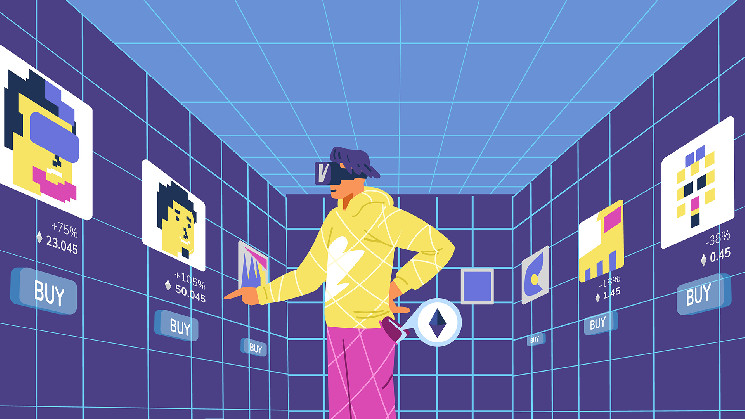NFT
The non-fungible token (NFT) market is evolving and measuring its success depends on the metrics you look at.
According to a new report released Thursday by DappRadar, NFT trading volume for the month of May has hit $333 million so far, putting it on track to drop below $1 billion for the first time this year. In contrast, there have been 2.3 million sales so far this month and a notable increase in the number of weekly active portfolios interacting with NFTs.
Sara Gherghelas, a blockchain analyst at DappRadar, told CoinDesk that the number of NFT sales appears to be on track to meet or exceed last month’s numbers, in contrast to trading volume, which is significantly behind last month’s count. . In her view, this could indicate that there are more NFT traders in the market making smaller trades in dollars.
The number of unique active portfolios linked to NFT activities grew 27% in May, the report added, attributing the growth to the Miladys NFT collection — which received a notable pump from Elon Musk — as well as profits made from the hyped PEPE token funneled back to the NFT market. This contributed to an increase in on-chain activity, which caused Ethereum’s gas costs to skyrocket.
Overall, Ethereum (ETH) continues to lead the NFT market in trading volume, although other blockchains such as Solana and Polygon have a higher number of NFT sales, with 26.9% of NFT sales on Polygon and 13% on Solana, according to Dapp Radar .
“When it comes to the number of NFT sales, Ethereum’s [market] dominance drops to just 5.7%, indicating that the blockchain is primarily used for executing high volume sales, positioning it as the platform of choice for the “NFT aristocracy,” the report said.
And finally, Blur and OpenSea continue to disagree over dominance of the NFT market, even though both excel in different areas, says DappRadar. Blur is winning by a significant margin in terms of trading volume, with approximately $181 million in trades this month, largely catalyzed by the release of the Season 2 rewards campaign and the launch of the Blend lending protocol. However, OpenSea still has a higher number of active NFT traders than Blur, suggesting it continues to dominate with a mainstream audience.
Does trading volume matter?
So what does all this mean?
Gherghelas told CoinDesk that trading volume remains an important metric for measuring success in the NFT market, although the number can be manipulated by wash trading, especially among collectors looking to earn rewards on platforms like Blur.
“We saw the market manipulation that happened on Blur,” she said. “People use the platform to farm [Blur tokens] and participate in airdrops.”
She added that Blur isn’t too concerned about the number of active traders on its platform as it focuses on a smaller number of professional traders with big pockets and extensive portfolios.
“Right now, when you go on Blur, you use Blur to buy expensive NFTs and this is the target,” she explained. “[Pro platforms] need the big money pouring in and don’t care about getting more users.”
Other data support Gherghelas’s observations. Nansen tweeted in March that much of Blur’s trading volume at the time came from just the top 100 NFT traders.
Still, she said, trading volume remains an important metric, as long as you take context into account.
“I think trading volume at some points is a very important metric to see exactly how much money is going through the NFT market,” she said. “During the bull market, the huge trading volume meant there were a lot of people coming into the room and people were excited. You could have made a lot of money.”
“At the moment, if the trading volume has decreased but the number of sales has increased, it means that we have the same number of traders, but their behavior has changed.”
She added that it is important to consider what type of NFT you are looking at when considering trading volume. She calls the sale of lots on metaverse platforms different from the sale of art-based NFT collections.
“When we look at trading volume for the metaverse, I think that’s a whole different topic,” she explained. “The trade volume matters there because the trade volume is equal to the utility of the country, which is equal to the profit you can make. It’s the whole ecosystem. It’s a new economy there.”

